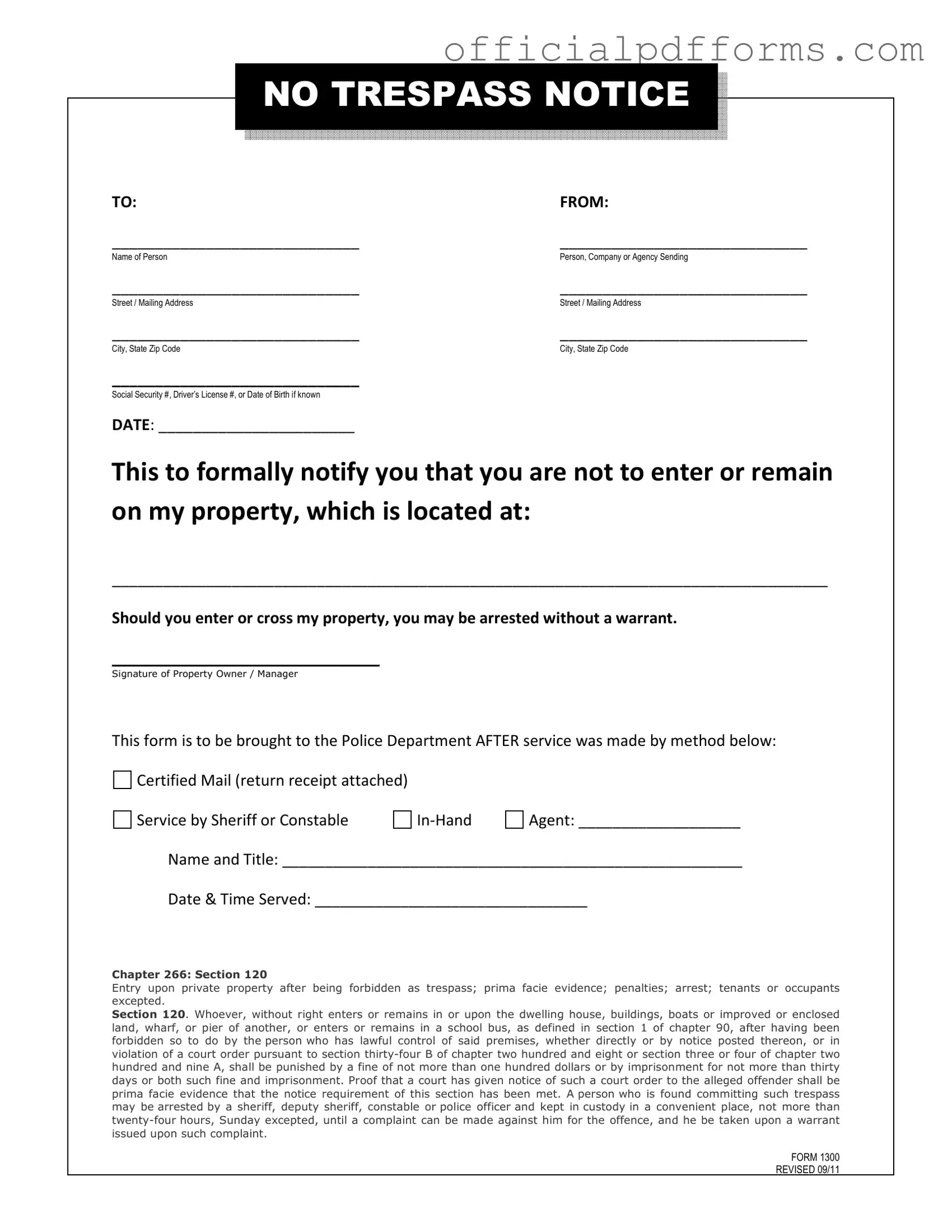What is a No Trespassing Letter?
A No Trespassing Letter is a formal document that notifies individuals they are not allowed to enter or remain on a specific property. It serves as a clear warning and can be used to enforce property rights. By sending this letter, the property owner establishes boundaries and communicates their expectations regarding access to their land.
To complete the No Trespassing Letter form, follow these steps:
-
Fill in the names of both the sender (property owner) and the recipient (individual being warned).
-
Provide the address of the property where trespassing is prohibited.
-
Clearly state the date of the letter.
-
Include the method of service used to deliver the letter, such as Certified Mail or service by a Sheriff.
-
Sign and date the document to validate it.
What happens if someone ignores the No Trespassing Letter?
If someone disregards the No Trespassing Letter and enters your property, they may be subject to arrest without a warrant. This letter acts as a legal warning, and if enforcement is needed, you can provide it to law enforcement as evidence of your intent to restrict access.
Can I send the No Trespassing Letter via email?
While it’s possible to send a No Trespassing Letter via email, it is not the most effective method for legal enforcement. For the letter to hold weight in court, it is recommended to use a method that provides proof of delivery, such as Certified Mail or personal service by a Sheriff or Constable.
While there is no strict format required, it is important to include specific elements such as the names of the parties, the property address, and a clear statement prohibiting entry. Using the provided form ensures that you include all necessary information and maintain a professional tone.
What should I do after sending the No Trespassing Letter?
After you send the No Trespassing Letter, keep a copy for your records. If the recipient does not comply, you can take further action. This may include contacting law enforcement to report trespassing incidents. Having proof of your notification will strengthen your case if legal action becomes necessary.
